Hoo Fan Chon is a visual arts practitioner based in George Town, Penang. His research-driven projects are often set in local geographies and concern class aspiration, cultural identity, informal histories, and colonial legacy.
︎ email ︎ cv
✺ 2025 ✺ 2024 ✺ 2023 ✺ 2022 ✺ 2021 ✺ 2020 ✺ 2019 ✺ 2018 ✺ older works ✺ photography ✺ video ✺ painting ✺ sculpture ✺ installation ✺ writing ✺ george town ✺ archive ✺ fish ✺ durian ✺ badminton ✺
︎ email ︎ cv
✺ 2025 ✺ 2024 ✺ 2023 ✺ 2022 ✺ 2021 ✺ 2020 ✺ 2019 ✺ 2018 ✺ older works ✺ photography ✺ video ✺ painting ✺ sculpture ✺ installation ✺ writing ✺ george town ✺ archive ✺ fish ✺ durian ✺ badminton ✺
Let Them Eat Salmon

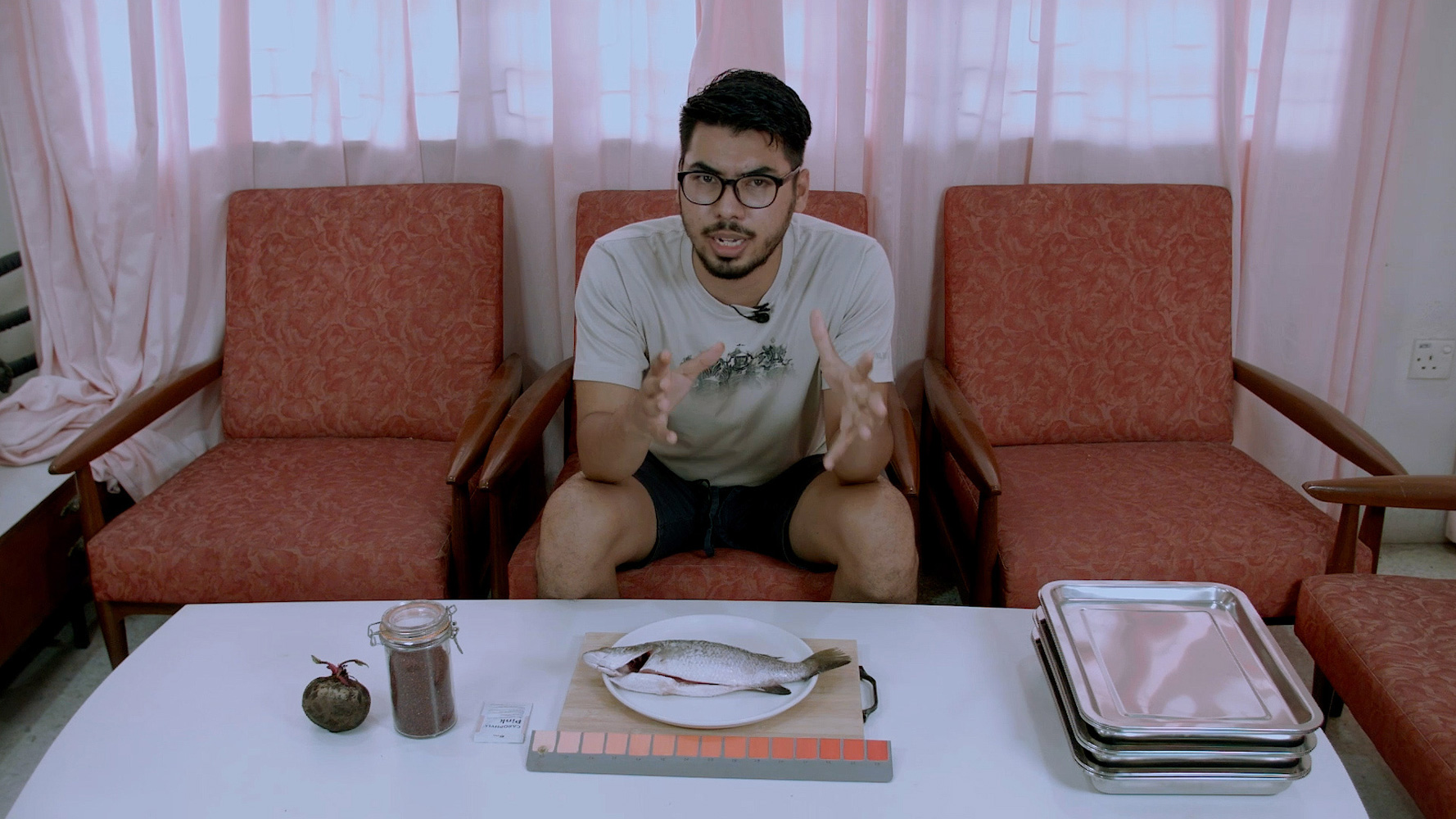








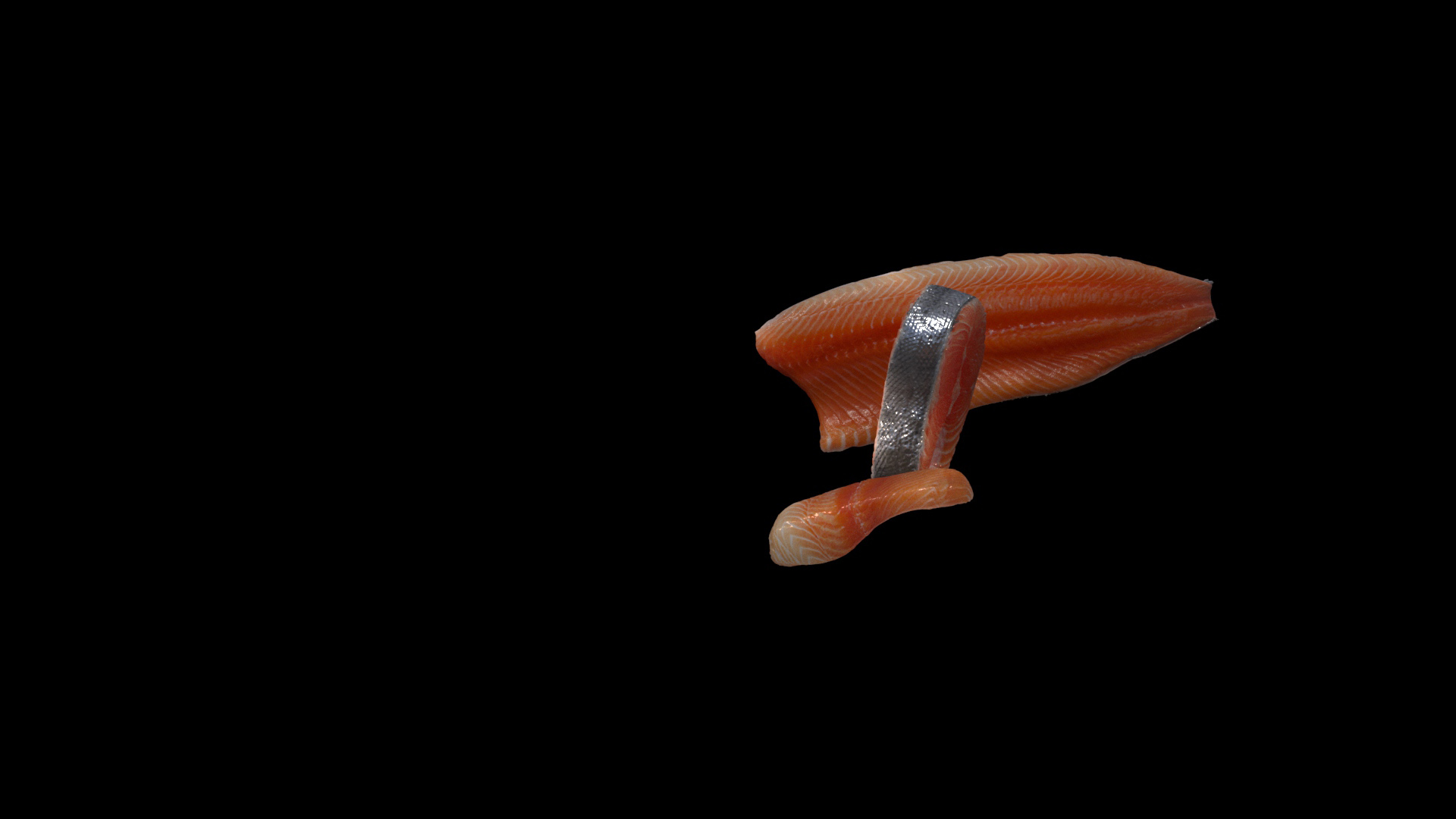
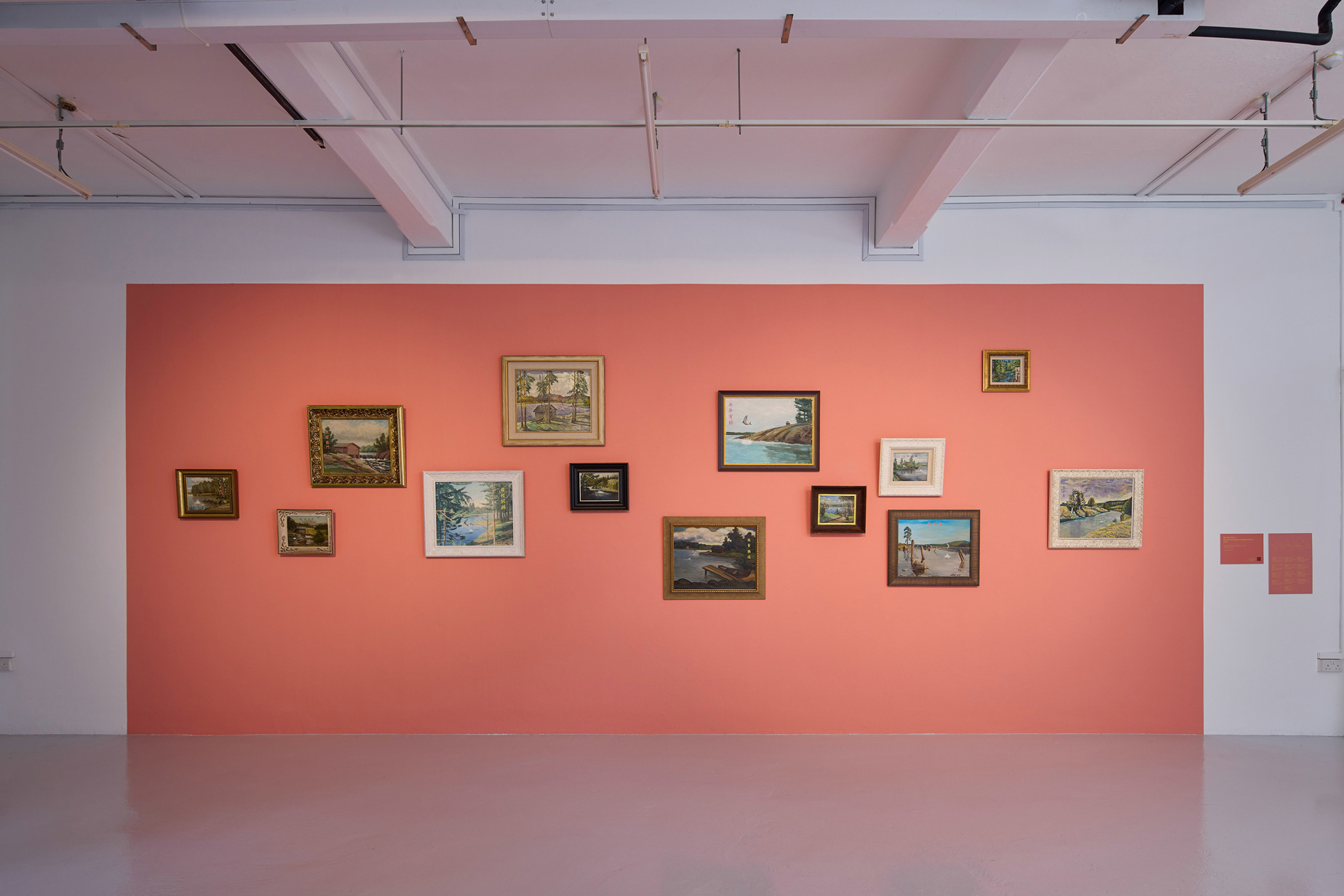
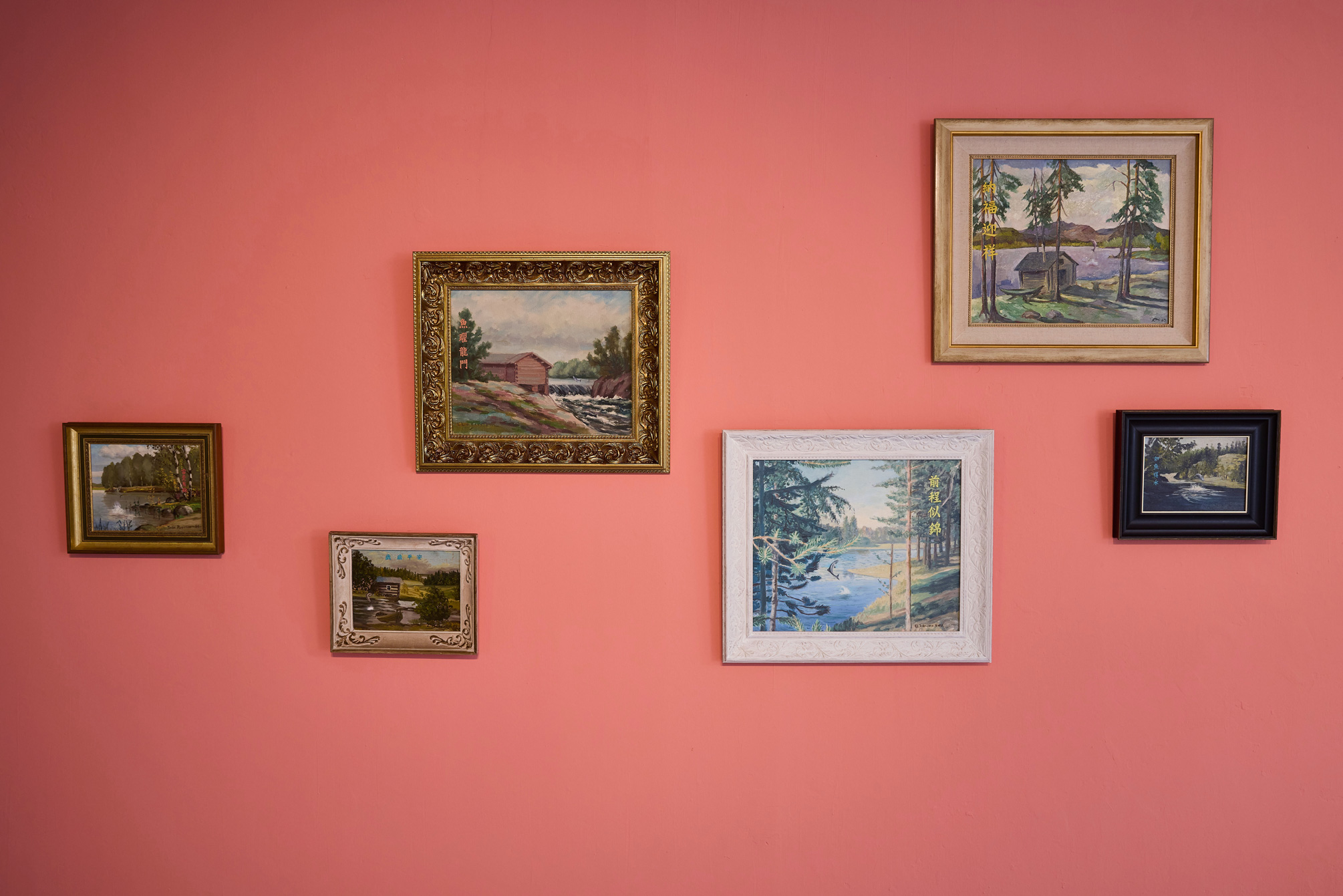





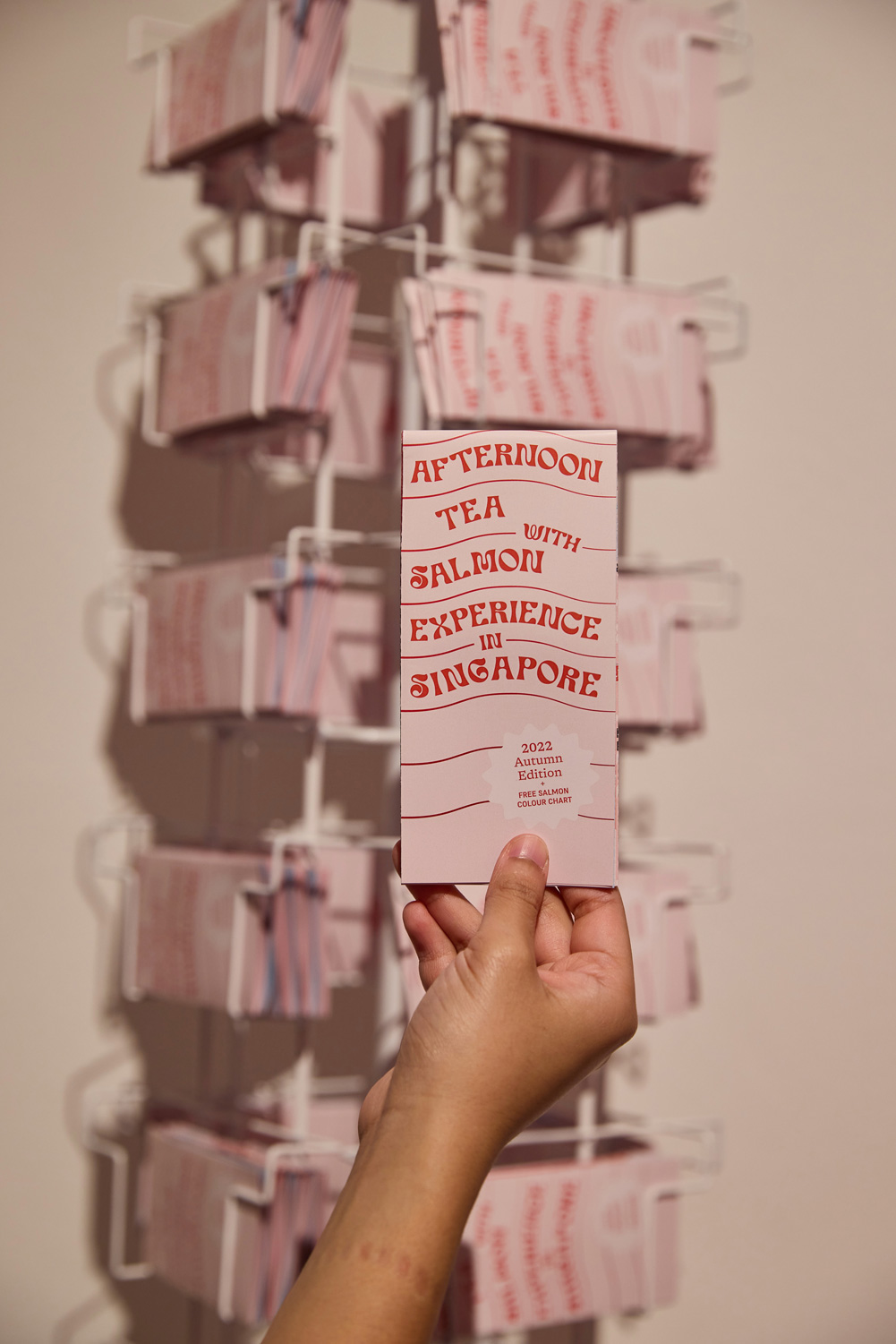

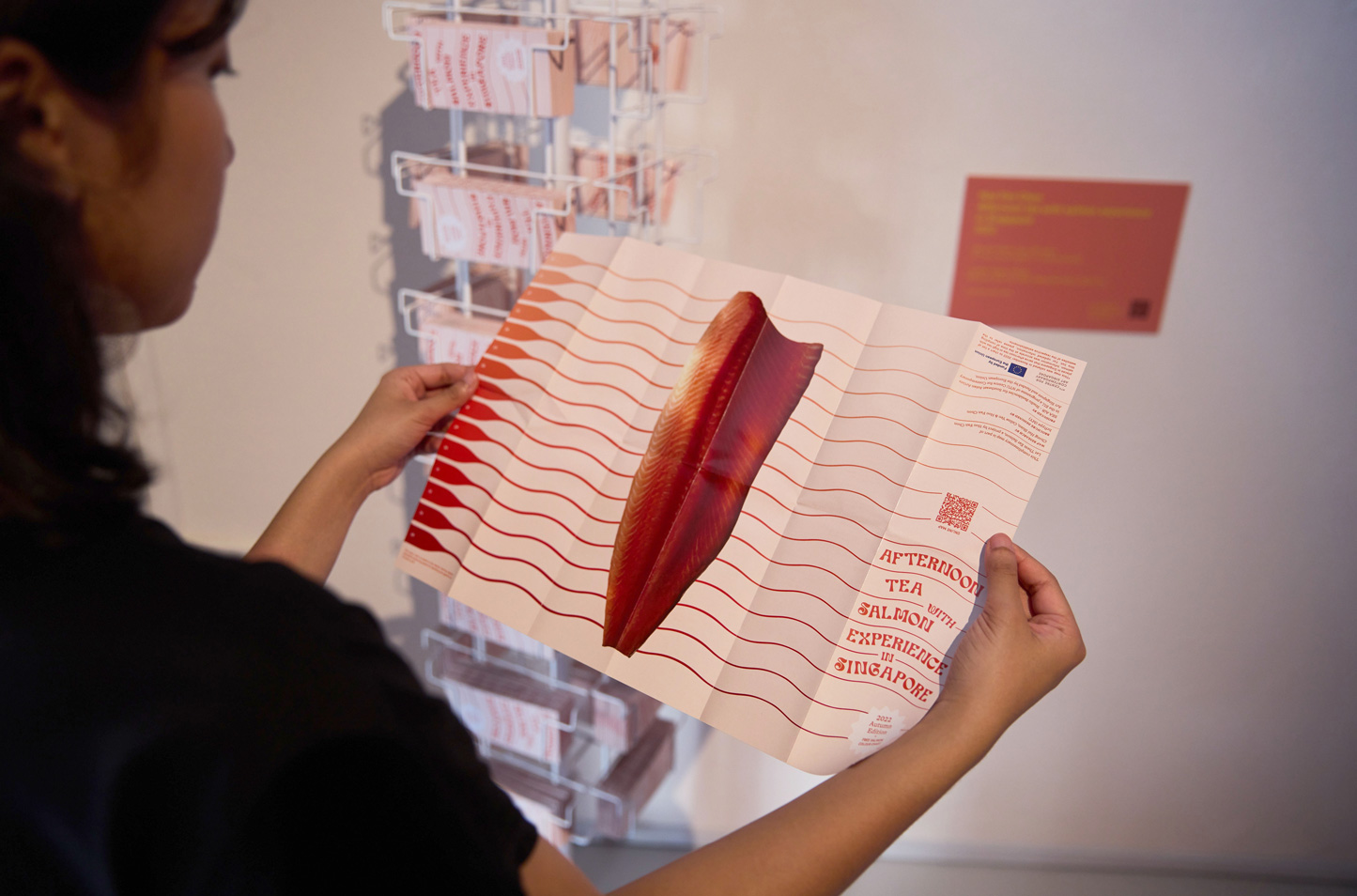
Hoo Fan Chon, Citra Sasmita, Vuth Lyno: New Works
2023 Jan, NTU CCA Singapore Residencies Studios (Gillman Baracks SG)
Curated by Dr Anna Lovecchio
Produced by “SEA AiR – Studio Residencies for Southeast Asian Artists in the EU”, a programme of NTU Centre for Contemporary Art Singapore funded by a grant from the European Union
List of works:
Finnish landscape painting series
Interventions on 13 found paintings (framed), dimensions variable, 2022
How to turn your siakap into salmon
Single-channel video, Full HD, 15:36 min, 2022
Talent: Zufar Zeid
Production Assistant: Sven Tang
I have never seen a swimming salmon in my life
3D animation, projection, fish tank, plastic plants, bubble pumps, sound,
2:58 min, 2022
Animation: Darrel Chia Chee Sum
Voiceover: Sir David Attenborough (extracted from “Year of the Salmon”, produced by Pace Productions, 2019)
Afternoon tea with salmon experience in Singapore
Takeaway foldout map, 500 copies, 29.7 cm x 42 cm (open), 7 x 14,8 cm (closed), 2022
Graphic Design: hrftype
Research: Hoo Fan Chon, Chong Hui Shien, Celine Yeo
2023 Jan, NTU CCA Singapore Residencies Studios (Gillman Baracks SG)
Curated by Dr Anna Lovecchio
Produced by “SEA AiR – Studio Residencies for Southeast Asian Artists in the EU”, a programme of NTU Centre for Contemporary Art Singapore funded by a grant from the European Union
︎
List of works:
Finnish landscape painting series
Interventions on 13 found paintings (framed), dimensions variable, 2022
How to turn your siakap into salmon
Single-channel video, Full HD, 15:36 min, 2022
Talent: Zufar Zeid
Production Assistant: Sven Tang
I have never seen a swimming salmon in my life
3D animation, projection, fish tank, plastic plants, bubble pumps, sound,
2:58 min, 2022
Animation: Darrel Chia Chee Sum
Voiceover: Sir David Attenborough (extracted from “Year of the Salmon”, produced by Pace Productions, 2019)
Afternoon tea with salmon experience in Singapore
Takeaway foldout map, 500 copies, 29.7 cm x 42 cm (open), 7 x 14,8 cm (closed), 2022
Graphic Design: hrftype
Research: Hoo Fan Chon, Chong Hui Shien, Celine Yeo
Despite Hoo Fan Chon’s hope that the residency at Helsinki International Artist Programme would provide some respite from his obsession with fish-based iconography and symbolism, upon arriving in Helsinki the artist found himself immediately drawn to the salmon pink colour that commonly adorns buildings in Finland. This chromatic cue ignited his interest in issues of taste, class aesthetics, and fish culture triggering an erratic investigation about the cosmetic processing of farmed salmon, the environmental plight of this fish, and the social status of its consumption as a signature of class and wealth.
Inspired by amateur tutorials commonly found on YouTube, the video How to turn your siakap into salmon illustrates DIY technique to colour fish. While the pink pigmentation of wild salmons is due to a natural diet made of krill and shrimp, the flesh of farmed salmon is off-white. In order to achieve the vibrant hue that makes salmon appealing to consumers, farmed salmons are regularly fed synthetic carotenoids the health implications of which are still under scrutiny. In Southeast Asia, salmon is a luxury good and its consumption bespeaks the Western lifestyle aspirations of a rising global middle class. This instructional video shows how to simulate a salmon-eating experience by dying affordable local fish and is presented alongside takeaway maps of upscale Singaporean restaurants where salmon is served at high tea.
The ironic speculation on how to ‘domesticate’ a foreign species continues in I have never seen a swimming salmon in my life. Accompanied by a voiceover by Sir David Attenborough borrowed from an advocacy campaign to protect salmon, the installation features 3D animations of salmon cuts–fillet, loin, and steak–swimming inside a fish tank, a staple fixture in Chinese seafood restaurants.
The artist’s familiar-yet-distant relation to salmon culminates with Finnish landscape painting series, an installation featuring 13 paintings hung on salmon pink wall. In this series, the artist introduced the motif of the proverbial “carp leaping over the dragon’s gate” and auspicious Chinese blessings into existing Finnish landscape paintings purchased in thrift shops around Helsinki. Both salmons and carps are known for their strength and jumping ability; in Chinese culture, the iconography of the leaping carp symbolises courage and perseverance leading to wealth and prestige. By conflating Chinese symbolism and Nordic waterscapes where wild salmons once thrived, the work enacts a process of cultural contamination while also hunting at the hardships of migratory journeys and environmental change.
︎
Text by Dr Anna Lovecchio (from Hoo Fan Chon, Citra Sasmita, Vuth Lyno: New Works exhibition brochure)
Inspired by amateur tutorials commonly found on YouTube, the video How to turn your siakap into salmon illustrates DIY technique to colour fish. While the pink pigmentation of wild salmons is due to a natural diet made of krill and shrimp, the flesh of farmed salmon is off-white. In order to achieve the vibrant hue that makes salmon appealing to consumers, farmed salmons are regularly fed synthetic carotenoids the health implications of which are still under scrutiny. In Southeast Asia, salmon is a luxury good and its consumption bespeaks the Western lifestyle aspirations of a rising global middle class. This instructional video shows how to simulate a salmon-eating experience by dying affordable local fish and is presented alongside takeaway maps of upscale Singaporean restaurants where salmon is served at high tea.
The ironic speculation on how to ‘domesticate’ a foreign species continues in I have never seen a swimming salmon in my life. Accompanied by a voiceover by Sir David Attenborough borrowed from an advocacy campaign to protect salmon, the installation features 3D animations of salmon cuts–fillet, loin, and steak–swimming inside a fish tank, a staple fixture in Chinese seafood restaurants.
The artist’s familiar-yet-distant relation to salmon culminates with Finnish landscape painting series, an installation featuring 13 paintings hung on salmon pink wall. In this series, the artist introduced the motif of the proverbial “carp leaping over the dragon’s gate” and auspicious Chinese blessings into existing Finnish landscape paintings purchased in thrift shops around Helsinki. Both salmons and carps are known for their strength and jumping ability; in Chinese culture, the iconography of the leaping carp symbolises courage and perseverance leading to wealth and prestige. By conflating Chinese symbolism and Nordic waterscapes where wild salmons once thrived, the work enacts a process of cultural contamination while also hunting at the hardships of migratory journeys and environmental change.
︎
Text by Dr Anna Lovecchio (from Hoo Fan Chon, Citra Sasmita, Vuth Lyno: New Works exhibition brochure)